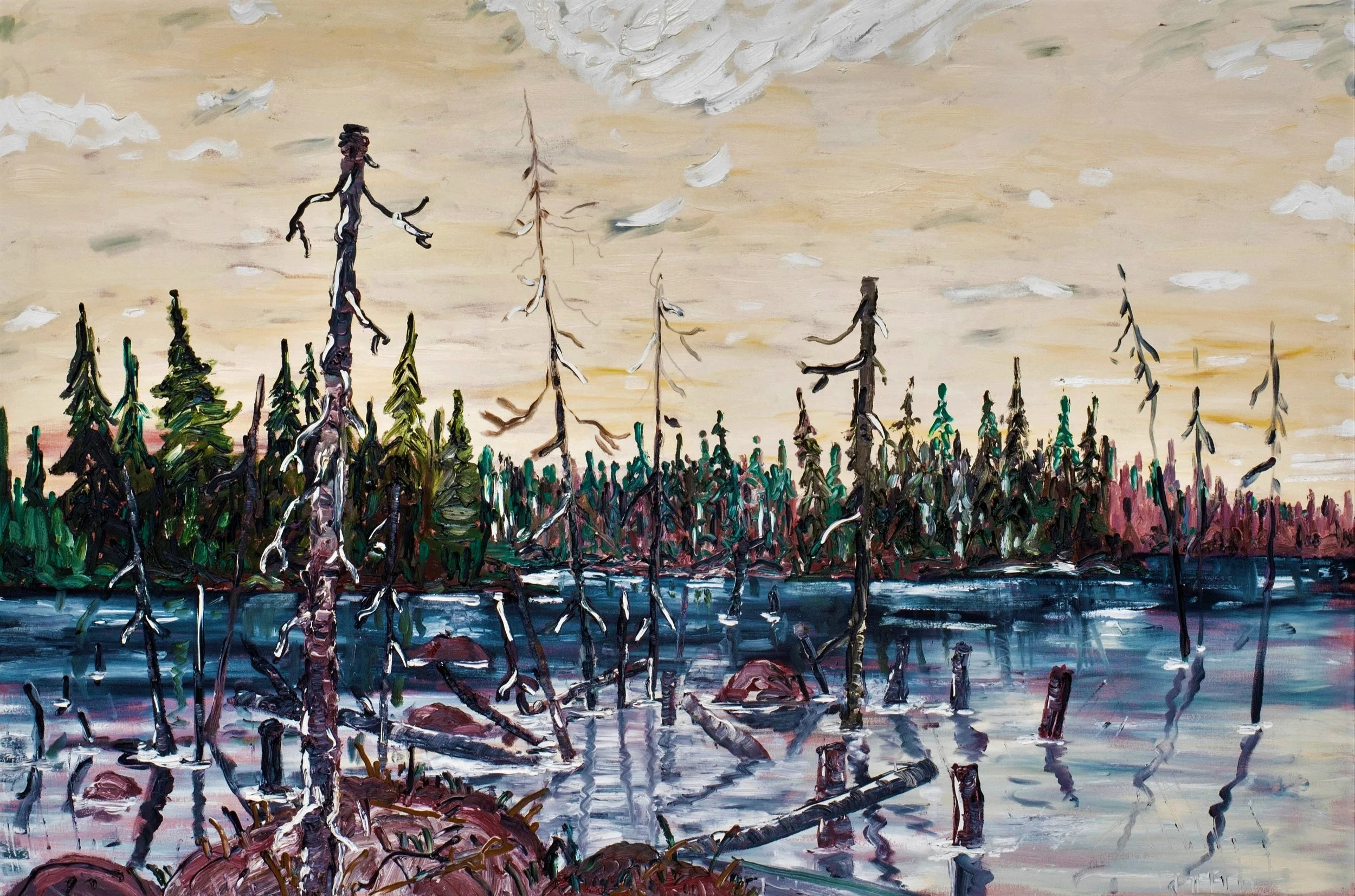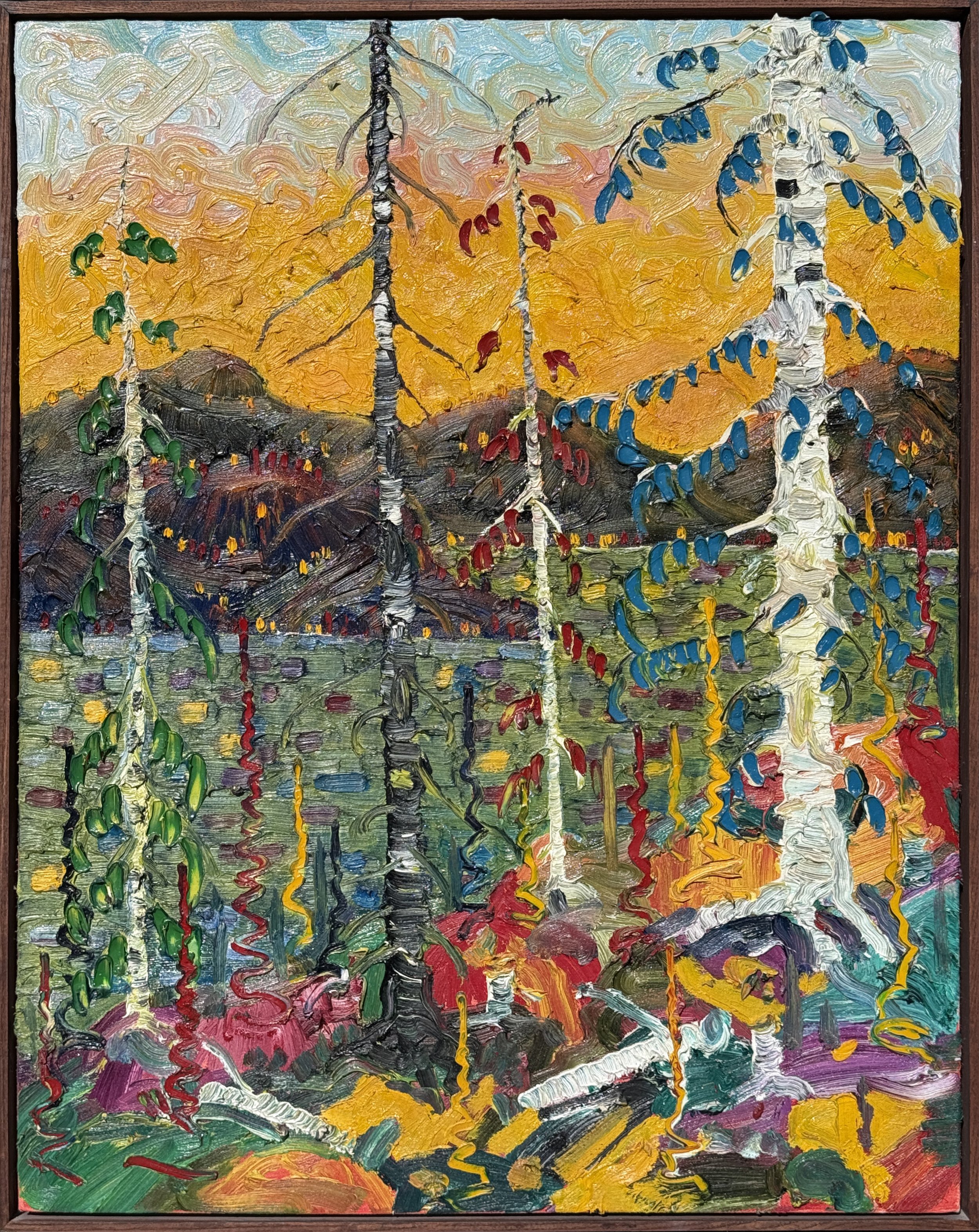Remembering Alex Cameron (1947–2025): A Painter of Vision, Colour, and Commitment
It is with deep respect and sadness that we mark the passing of Canadian painter Alex Cameron, who died on June 17, 2025, at the age of 78. Over the course of five decades, Cameron forged a remarkable artistic path—one that blended lyrical abstraction with echoes of the Canadian wilderness, resulting in some of the most vibrant and emotionally resonant paintings in contemporary Canadian art.
Cameron’s works are more than compositions of colour and form—they are visual poems. Deeply rooted in memory, imagination, and intuition, his paintings pulse with energy and clarity, offering viewers a sense of place that feels both personal and transcendent. Whether abstract or landscape-driven, his paintings carry a strong emotional presence and a tactile relationship to the land.
A Life in Art and Influence
Born in Parry Sound and raised in the Georgian Bay region, Cameron was immersed in creativity from an early age. After studying at Toronto’s New School of Art under influential modernists like Graham Coughtry, Gordon Rayner, and Dennis Burton, Cameron went on to work as studio assistant to Jack Bush between 1972 and 1976—an experience that shaped his lifelong dedication to expressive colour and compositional rhythm. His long friendship with renowned critic Clement Greenberg further affirmed his place in the lineage of Canadian abstraction.
Throughout his career, Cameron remained true to the handmade mark—often painting from memory rather than reference. His use of thick impasto, finger-width strokes, and intuitive motion gave his work a distinct musicality, filled with light, texture, and painterly joy. His travels across Canada—from Newfoundland to the Yukon—informed much of his subject matter, but it was always filtered through his own interior world.
An Enduring Legacy in Canadian Art
Cameron’s contributions to Canadian visual culture are significant. His work was shown in over 40 solo exhibitions, including Four Toronto Painters at the Art Gallery of Ontario (1976) and 14 Canadians at the Hirshhorn Museum in Washington, D.C. (1977). A major retrospective, Alex Cameron: In Mid-Career, was held at the Robert McLaughlin Gallery in 1985.
image: Alex Cameron. Orange Crimson Bliss, 2004 oil on canvas 38" x 30" $8,500.00
His paintings are held in the collections of the Art Gallery of Ontario, Art Gallery of Hamilton, Agnes Etherington Art Centre, and in hundreds of private and corporate collections across Canada—including the Office of the Prime Minister and Her Majesty Queen Elizabeth II.
Collectors, curators, and fellow artists alike were drawn to Cameron’s ability to create work that was both rooted in abstraction and charged with emotional connection. He never painted for trend or market; he painted with conviction.
Courage, Determination, and the Final Canvas
Even in his later years, Cameron remained unwavering in his devotion to painting. After suffering a debilitating stroke in 2012 that left him unable to use his dominant hand, he painstakingly taught himself to paint with his left. Though his speech declined, his presence—both in life and on canvas—remained luminous.
His final painting, Big Dipper, was still on the easel when he fell near his Toronto studio on June 4. He passed away days later, surrounded by loved ones, with his wife Lorna Hawrysh at his side.
What Remains
In remembering Alex Cameron, we celebrate not only the work he left behind but the spirit he infused into every canvas. His paintings remind us that colour is emotion, that memory can be abstracted into beauty, and that the artist’s hand still matters.
image: Margie Galita and Tabita Moore, Moore Gallery, Toronto 2001
For collectors and institutions, his legacy represents a critical chapter in Canadian art—one that continues to grow in relevance and resonance.
As Cameron himself once reflected:
“The essence of a painting for me is the same as the essence of a poem… it is a poem of vision.”
May his vision continue to inspire.




